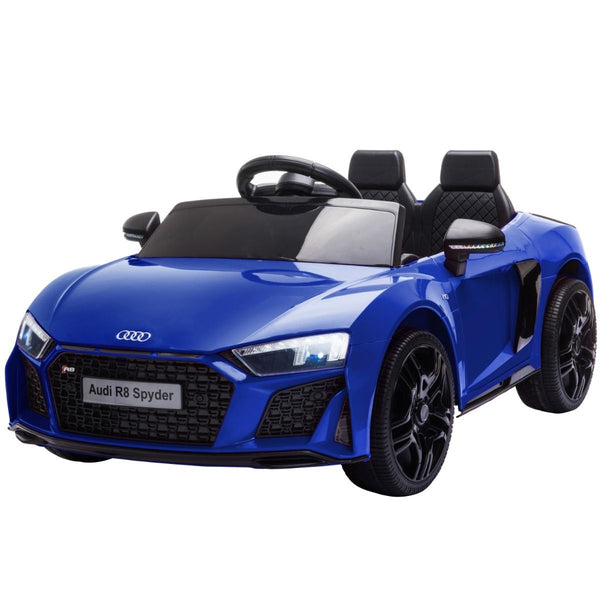Free Advice For Deciding On Ride On Toys
Wiki Article
What Should I Know About Battery Life & Charging Time For An Electric Ride-On Child's Car?
Understanding the charging times and battery life for the electric ride on your kids Cars will allow you to ensure uninterrupted playtime. This article will provide you with all the information you need to be aware of about the battery type.
Most electric rides-on cars are rechargeable and use either led-acid or lithium-ion batteries. Lead-acid batteries are slower to charge and have a shorter battery life.
Battery Capacity
The battery size that is expressed in amperehours (Ah), or watthours(Wh), will determine the length of time a car can be operated with one charge. Batteries with a higher capacity provide a longer playing duration before the need to recharge.
Run Time -
The time of a car's runtime is the amount of time it can be operated continuously with a single battery charge. It is contingent on a variety of factors like battery capacity, motor speed, terrain and rider weight.
The typical electric ride-on car run times vary from 30 minutes to two hours per charge. However, certain batteries with high capacity could have longer durations.
Time for Charging -
The charging duration refers to how long it takes to completely recharge the battery after it is depleted. The charging time can differ based on the battery capacity, charger specifications and charging technique.
The average charging time of electric ride-on vehicles is 8-12 hours. Some models have faster charging times, especially if using lithium-ion batteries.
It's crucial to follow the manufacturer's recommendations for charging to ensure the security and longevity of the battery. The battery's performance may be negatively affected when the battery is either overcharged or undercharged.
Charge Method Charge Method
Electric ride-on cars usually have a charging station which plugs into a household outlet. Some models have fast charging capabilities, or they may come with a charger that changes its rate of charging based on the state of the battery.
To avoid any harm to the electrical system or battery, ensure that the charging connector and port you are using are compatible with chargers provided with your ride-on vehicle.
Additional Batteries
Some ride-on electric vehicles will permit you to purchase additional batteries or spares to extend your playing time. Having extra batteries on hand allows you to swap out depleted batteries for fully charged ones, which reduces interruptions between play sessions.
If you know the charging duration and battery life of your electric vehicle for children you can have endless hours of play and adventure. The battery's life can be extended by charging the battery frequently and using the correct charging methods. Take a look at the top electric kids cars for more tips including 2 seater electric cars, electric toy car, toy toy cars, riding digger, kiddies cars, ride on car, childrens digger, ride a toy, electric toy car, childs ride on car and more. .

What Assembly And Maintenance Is Needed For The Child's Car Ride-On?
It is typical for children's ride-on cars to require some assembly, as well as ongoing maintenance, in order to achieve optimal performance and security. Here are the typical maintenance and assembly requirements for kids' ride-on vehicles. - - Assembly -
The majority of ride-on cars are assembled and require some assembly on the arrival. Connecting steering wheels, wheels seats, and other components as per the instructions supplied by the manufacturer are generally required.
Follow the steps to assembly in order to make sure that all components are properly attached and aligned. Use the hardware and tools provided to complete the process.
Cleaning -
To keep your vehicle in good condition and functioning properly, it is vital to regularly clean it. Use a soft sponge, or cloth that has been dampened with mild soap and water to wash the exterior surfaces.
Pay attention to areas that are susceptible to accumulation like the tires, wheels, and undercarriage. Brush or use the tooth brush to clean areas that are hard to reach and eliminate the stubborn dirt.
Avoid harsh chemicals or abrasive cleansers, as they may damage the coating or the electronic component.
Battery Care -
Battery care is crucial when the ride-on is powered by rechargeable batteries. Careful battery maintenance can maintain the performance of your ride-on and prolong battery lifespan. Use these battery care guidelines -
Charge the battery prior to each use, and fully after. This will ensure that you get the best performance.
Avoid overcharging or leaving the battery hooked to the charger for extended time, as this could damage the battery and reduce the battery's lifespan.
When not in use, store the ride-on vehicle as well as its battery in a dry, cool place away from direct sunlight.
If necessary clean the terminals using a wire brush or terminal cleaner if they are corroded.
Replace the battery if it is no longer in charge, or if there are indications of damage.
Tire Maintenance -
Be sure to check the tires on a regular basis for signs of wear, damage or loss of pressure. As needed, utilize a bicycle air compressor or air compressor to blow up tires at the recommended pressure.
Check for foreign and debris objects within the tread pattern that could cause punctures. Repair or replace damaged tires if necessary. Clear obstructions.
Lubricate the axles and wheel bearings frequently to ensure a smooth and efficient rotation. reduce friction.
Occasional repairs or replacements
Even with regular maintenance, it's still likely that vehicles with ride-ons will require repair or parts replaced due to wear and tear or accidents.
Watch out for indications of malfunction or deterioration, such as unusual noises or power outages, or unusual behavior. Consult the manufacturer's instructions or call customer support to get help on troubleshooting or repair solutions.
Replace damaged and worn-out components to protect yourself from further harm, and to ensure that the ride-on cars are functional and safe.
These assembly and maintenance instructions will assist you in keeping your child's car ride in good condition, allowing them to enjoy enjoyable and safe playtime. See the recommended discover more for kids cars for website examples including kidscars, toy in car, race car toy, childrens digger, toy ride, digger ride, childrens digger, car for toy, electric ride on, ride electric car and more. .

What Are The Possibilities For Remote-Controlled Cars For Children? What Are The Pros And Cons Of These Cars?
Remote control vehicles for children are also known as RC or remote-controlled cars, come in a wide range of styles, sizes and price points. They're designed to fit various budgets and tastes. This article will provide an overview of the different types sizes, prices and types of children's remote controlled cars and their advantages and disadvantages.
Electric RC Cars – Remote-controlled cars powered by batteries that can be used indoors or outdoors. There are many different styles of RC cars including Buggies, trucks, and sportscars.
Nitro RC Cars – Gas-powered remote controlled vehicles that have more power and performance however, more maintenance and expertise is required to operate. Electric RC cars are less bulky and cost less.
Scale Models are remote-controlled replicas which include vehicles, trucks and planes. Scale models range from 1 -10 to 1-24, with larger scales providing more detail.
Sizes -
The dimensions of remote-controlled cars for kids range from small micro-sized versions to larger-scale replicas. Size can influence the efficiency of a car, its speed, and the handling characteristics.
Micro-sized cars are small and light. This makes them ideal for indoor use, especially with young children. The larger models offer greater performance and endurance, making them ideal for off-roading or racing.
Prices
The cost of a remote control car for kids varies based on its size, features, manufacturer, and the build quality.
The cost of smaller electric RC vehicles can vary between $20 and $100. However larger-scale electric or nitro RC models can range between $100 and $500.
The price of scale models and hobby grade RC vehicles can range from a few hundred dollars to more than 1,000 dollars based on the level of performance and precision.
The pros and cons of -
Pros -
Adults and kids can both enjoy the thrills and excitement of remote-controlled cars.
Skill Development Driving an RC car can help children develop hand-eye coordination, spatial awareness, and problem-solving skills.
Social Interaction - RC vehicles are fun to play with friends and family, promoting the social aspect and cooperation.
Aftermarket parts such as upgrades, accessories, and other items from the aftermarket can be used to customize numerous RC vehicles and enhance their performance.
Cons
Costs - Top-quality cars with the latest features, such as hobby-grade cars, can be quite expensive.
It can be difficult for children to operate the RC cars for the first time.
Maintenance - RC cars require regular maintenance, which includes cleaning, lubrication, and occasional repairs or replacements of parts.
Safety issues - RC vehicles are prone to danger in the event that they aren't operated properly under the supervision of an adult. They could create accidents, fall hazards and electrical dangers.
The best remote control kids vehicles are ones that offer an educational and exciting experience for children of all ages. When selecting the best model for your child however, you must be aware of a range of aspects, including the size, cost features, and safety. Hobby-grade RC cars may be best for older kids or people who enjoy. Less complicated models are better for children who are just beginning their journey. Follow the top rated Audi ride on car kidscars.co.uk news for site tips including toy cars toy car, toy cars, race car toy car, electric ride on cars, riding digger, ride of car, remote control childrens car, kids electric cars, childrens electric ride on, childs electric ride on car and more. .
